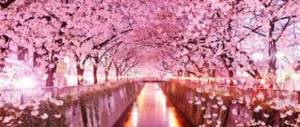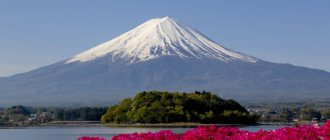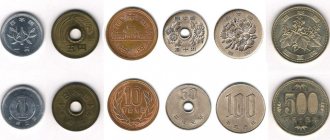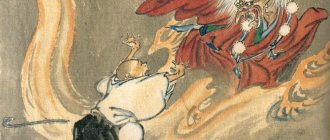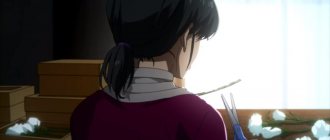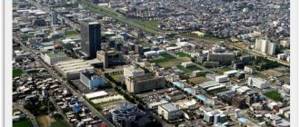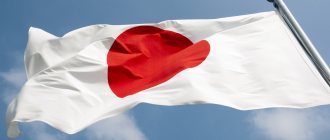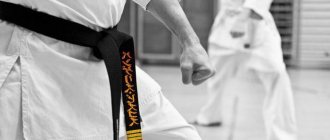Sign up for a lesson and discuss this topic with us!
Your name
Telephone
Japanese culture, even in comparison with other Eastern countries, has always been and continues to be a mystery for the whole world.
How do these people manage to preserve and maintain an ideal system in literally everything? A special mentality here can be observed absolutely everywhere: on the street, in shops, in any public places. For example, can you tell us how school works in Japan? What are its features, and how is it so different, for example, from educational institutions in Italy, Norway or Russia?
We suggest you understand a little about what it looks like and how they organize everything there.
Briefly about the main thing
The school year in Japan begins in April. Depending on the school, classes last from Monday to Friday or Saturday inclusive. The academic year is divided into three semesters, between which there are short breaks in winter, spring and summer. Schooling lasts 9-12 years. The system itself consists of:
- Primary school (segakko) - 6 years of education.
- High school (chugakko) - 3 academic years.
- High school (kotogakko) - also 3 years.
It is worth noting that attendance at primary and secondary schools is compulsory. However, 97% of students continue their education in high school.
Interesting facts
Knowing about the unusual culture and structure of the country, it is difficult to imagine that this does not affect schools in any way. Here are just a few facts that immediately make it clear that we are talking about the Japanese school and no other:
- “First time in first grade” is going on here... in April. This period is considered the most favorable for the beginning of a new stage of life: nature awakens from winter, cherry blossoms bloom, spring comes and the whole world is renewed. Several times at the state level it was proposed to shift the school year to September, thereby “equalizing” it with the whole world. But local residents resolutely reject this option, no matter how much they respect cultural traditions.
- Not only the alphabet is divided into two parts. The rating system consists of letter and number designations. “In letters” a child can receive a grade from A to F, and “in numbers” this is a 100-point system standard for many countries. Typically, the passing score on this scale is 60, but in some cases special criteria can be introduced, then the bar can even reach 90 points. This system is used for entrance exams and final certifications.
- There is no single program - the Ministry of Education only gives recommendations. The management of each institution has the right to independently determine sets of textbooks, a schedule of additional classes and special subjects.
Knowledge is above all
In the Land of the Rising Sun, education is one of the main goals in life. It is the level of knowledge that determines a person’s future. It is worth noting that the main purpose of the education system in Japan has remained virtually unchanged since the 6th century.
Yes, after the end of the war (in the second half of the twentieth century), it was influenced by European and American education systems, but the Japanese decided not to stray far from previous traditions. In recent years, a proposal has been made several times to change the start date of the school year in Japan so that children, like in many other countries around the world, start studying in September, but no one supported it.
Residents of the Land of the Rising Sun begin to comprehend literacy almost from the cradle. First, parents instill in them the rules of good manners, manners, and teach them to count. Later, the child goes to kindergarten, where he is taught the basic syllabaries: hiragana and katakana. Coming to the first grade of elementary school, students begin to learn kanji - hieroglyphs.
The workload in educational institutions is really heavy. You should especially be afraid of intermediate and final tests. If you compare, Russian schoolchildren are not very worried about tests, but for the Japanese, the mere mention of tests causes nervous trembling. Every Japanese student understands that the score he scores on the test determines which middle and high school he will be accepted into.
It’s the same with studying at universities and colleges. Many companies and firms cooperate directly with educational institutions and offer jobs to the best students after graduation. By the way, to get a good place, students must excel not only academically, but in social and cultural activities.
Uniform
Primary school students are exempt from wearing special uniform clothing. They are allowed to wear theirs. Some primary education institutions have uniforms. For boys - a white shirt, short shorts and a cap. Pants can only be put on when moving to medium. Girls wear long gray skirts and white blouses.
Backpacks are of particular importance for schoolchildren, their prices can vary from about 7000 yen to 70-80 thousand (about 58-650 euros), they can use one backpack for a very long time. One of my friends had a child go to first grade, and to her joy, the school itself purchased backpacks for the children - in the end the backpack cost only 8,000 yen. This is for the better, because when everyone has the same thing, you don’t want to get what your neighbor has.
But the other girl was less fortunate, their school was elite and a kind and wealthy granny decided to please her granddaughter by buying a very expensive backpack for 74 thousand yen! Crazy price for a small child, in my opinion. Although, this is already decided by the parents. So. In secondary and higher schools, uniforms are a mandatory attribute. The guys wear formal suits, similar to military uniforms, dark in color, and a white shirt. Girls - dark knee-length skirts, sometimes sundresses, light blouses, sailor suits, knee-length socks and flat shoes. The length of the skirts is fixed, but many girls roll them up to make them shorter - yes, we had this too :)).
Each school tries to come up with its own unique clothes so that they differ in color or details. And it made her stand out from the rest. Japanese students are required to have a change of shoes, and each student has their own locker. First of all, the children run to him to put away their street shoes.
And to be more precise?
For more information, please refer to the Japanese school year calendar.
- First semester: April 6 - July 20.
- Summer holidays: July 21 - August 31.
- Second semester: September 1 - December 24.
- Winter holidays: December 25 - January 6.
- Third semester: January 7 - March 25.
- Spring break: March 26 - April 5.
The time when the school year begins in Japan may vary. Much depends on the educational institution. In the country, of course, there are general recommendations regarding the organization of the educational process, and schools take into account the instructions of the Ministry of Education, but each makes its own adjustments to them. In some schools, classes begin on April 1 or end on March 31.
Preschool institutions
So, how do you study in Japan? It all starts with preschools. There are two types:
- State child care institutions. They are designed for children from two years old, created to help a working mother raise a child. Usually parents teach children manners, but if they don’t have time to raise a child because of work, then this will be done in a primary school.
- Private kindergarten. Designed for older children. Here kids are taught to sing, draw, read and count. In more elite, and therefore more expensive, institutions, they study English. Therefore, children come to school fully prepared.
The main function of preschool institutions is also socialization, and not just acquiring knowledge. The children are shown how to properly establish contact with peers and generally behave in society. In order for a child to be able to get along in any group in kindergarten, and then in schools, the composition of classes is changed annually.
Historical reference
Education in Japan has a long history. Until the 8th century, it was built according to the models of China and Korea. In the first half of the 6th century, Buddhist teachings began to spread in the country, and with it philosophy, science, astrology, and fine arts. A little later, thanks to the ruler Tenji, the first imperial school of Shojo appeared.
Emperor Tenji
By the eighth century, the Japanese were closely interacting with China, which was ruled by the Tang family. Thanks to these connections, Japan adopted the Chinese educational system.
At that time, Nara was the Japanese capital city, and the Academy was established there. Provincial institutions functioned locally. At the end of the 8th century, the capital was moved to Kyoto, but this scheme remained the same.
In the next four centuries, until the 12th century, the Chinese system flourished: institutions taught hieroglyphs and literary reading. At the same time, two types of alphabet appeared:
- katakana;
- hiragana.
Children from noble families attended classes in provincial and monastic schools. Children of the poor went to special institutions where they were taught reading, writing, arithmetic, and basic technical skills.
Life in Medieval Japan
After this period, education modeled on the Celestial Empire became obsolete. Then private and home schools began to appear in Japan. Often ordinary people were taught in the temples of the Buddhist teaching of Zen, which was then gaining momentum.
Much has changed since World War II. The Japanese borrowed some features in the educational structure from France, Great Britain and the USA.
Now let’s plunge into modern times and see what steps a person goes through before becoming a sought-after specialist.
To first grade
At the age of six, the child enters primary school. The majority of these institutions are public, but you can also find private ones. Subjects in primary school are native language, natural history, mathematics, music, labor, drawing, physical education. Several years ago, English was introduced as a compulsory language, which previously only began to be studied in high school. No homework is assigned.
In elementary school there are no clubs (interest groups), but many extracurricular activities are held, for example, sports festivals or theater performances. There is no school uniform as such in primary classes; students wear regular everyday clothes. An umbrella, a Panama hat and a yellow raincoat are required. These are mandatory items of clothing, especially when children are taken on an excursion. The bright color allows you to quickly find a child in a crowd if he suddenly gets lost.
Clubs and courses
Participation in the activities of school clubs (kai) is considered an important part of studying in secondary school. Typically, their activities are related to either sports or art, take place after classes and are organized by the students themselves. Aside from the obvious benefits they provide, clubs are also breeding grounds for hazing, where older students bully younger students to get better results (or just to make fun of them).
At the very beginning of the school year, the leadership of the clubs puts out their “advertising” for seventh grade students. Almost every seventh grader enrolls in one or more clubs and remains in them throughout their entire time in high school.
In addition to the school itself, most students attend paid preparatory courses called juku, which help them better prepare for passing school exams. Juku classes usually take place in the evening, two to three times a week.
To seventh grade
To make it clear, this is training from 7th to 9th grade. In addition to the subjects studied in primary school, exact sciences are added. The number of lessons is increasing. If in a primary school there were a maximum of 4 lessons a day, then in a new educational institution there may be 6-7. Students already have the opportunity to attend hobby groups, in which they spend time until 18:00.
In primary school, all subjects were taught by one teacher, in secondary school, each teacher was assigned a specific lesson. There are more than 30 people in classes.
Japan Primary School Program
The structure of primary education is represented by standard educational institutions, as well as schools for disabled children. Children begin attending primary school at the age of six. This level of education is compulsory for all citizens of the country. The duration of training at this stage is 6 years. The main disciplines throughout the entire period of study are:
- Japanese language (including calligraphy),
- mathematics,
- humanities sciences,
- natural sciences,
- basics of life,
- art,
- music,
- work,
- physical training.
School students in Japan are required to wear uniforms.
There are institutions where secular ethics, religion, valeology and other subjects are taught. Primary school students are required to wear a uniform. Also, special attention is paid to the mandatory procedure for cleaning classrooms directly by students . For this purpose, a duty schedule has been organized among schoolchildren.
...I was very lucky with the school: the teachers are the kind you can only dream of; The classes are intensive, and the training is entirely aimed at ensuring that students immerse themselves in the language as much as possible. Thanks to this, I quickly got involved and after a couple of weeks I understood almost everything that our “sensei” said in class...
Margarita Diskina
https://gaku.ru/students/diskina.html
To the tenth grade
Attending high school is not compulsory, but students must graduate in order to enroll in higher education. Here the main focus is on preparing students for university entrance exams. In addition to studying, students must be involved in clubs. Of course, this is not necessary, but similar information will be indicated in the introductory resume, and when interviewing at the university, this factor is paid attention to. Therefore, in every school it is difficult to find a student who does not attend clubs.
Also, high school students are taken on excursions and take part in festivals.
It is worth noting that high school students receive a lot of homework, even despite the availability of vacations and weekends, they have practically no free time left.
Exams
The Japanese have known what exams are since middle school. Until the end of the senior stage, they take exams five times a year - after each trimester and in the middle of the first and second. They show the level of mastery of each subject.
After graduating from high school, students take exams that determine the prestige of their future higher school, and therefore their path to the profession. However, the biggest stress is final exams. Unfortunately, they often become the cause of suicide among teenagers.
Juku
The school year in Japan is not just about school lessons and clubs. In the Land of the Rising Sun there are special private educational institutions that offer additional classes. In general, they are divided into two types:
- Non-academic. The child is taught art, the rules of the tea ceremony, traditional board games (Go, Shogi, etc.), or the student can attend some kind of sports section.
- Academic. Schoolchildren are taught various sciences, including foreign languages. Students usually come here who cannot master school material or have been absent from school for a long time. Also, those who want to successfully pass intermediate tests or entrance exams come here.
The reason for visiting such schools may be the number of people in the group (10-15 students). Naturally, information is better absorbed in such a small team. Students can also visit such institutions with friends. It is also worth noting that such schools are quite expensive, so not every family can afford them. But the student who refuses extracurricular activities has a disadvantage among his peers. This can only be compensated for by self-education.
List of main universities
As already mentioned, there are a huge number of universities in Japan. At the same time, the most popular educational institutions are those included in international rankings, such as QS and USNews. If you want to study at the best university in Japan and are willing to pass all tests with a 95% rate, it makes sense to apply to the universities listed in the table below.
| University name | Official site | general information |
| Tokyo University | https://www.u-tokyo.ac.jp/ | In world rankings, the faculties of the University of Tokyo are second only to American and English ones; The most prestigious professions are lawyer and philologist. 30,000 students, including 2,100 foreign students. Alumni include Nobel Prize winners in literature and Japanese prime ministers. |
| Teikyo University (Tokyo) | https://www.teikyo-u.ac.jp/ | The university was founded in 1966 and is currently recruiting for 10 faculties and 30 areas of special training. The University has a School of Medicine. It has its own research center and student financial support programs. |
| Osaka University | https://www.osaka-u.ac.jp/ | One of the largest universities in Japan. Like other universities in Osaka, it is a very prestigious institution. 11 faculties, 12,000 students, 8,000 graduate students, including 1,500 foreign ones. A library containing over 2.2 million scientific publications and textbooks. Branches in the USA, the Netherlands and Thailand. |
| Nagoya University | https://www.nagoya-university.uz/ | International University: many visiting students, mainly from China, Korea, Vietnam, Uzbekistan. Preparing for a career in international companies. 9 faculties, the opportunity to study as a teacher, engineer, or agricultural specialist. |
Timetable
Schools are usually located about 10 minutes' walk from the student's home. Classes start at 08:30. On Mondays, before classes, a “line-up” is held, at which the director speaks. On other days, this time is reserved for school announcements and attendance. In Japan, special attention is paid to visiting. If a student misses too much, he may be repeated a year or expelled from school.
From first to sixth grade, lessons last 45 minutes, in middle and high school - 50 minutes. There are 5-10 minute breaks between lessons. After the fourth lesson (around 12:30) there is a long lunch break - 1 hour. Students either eat in the cafeteria or bring their own bento, a home-cooked lunch. Those who try to start their meal before the specified time are severely punished. This is the education system in Japan.
Other educational institutions
Mostly men study at Japanese universities. Today, like a hundred years ago, it is believed that a woman should be the keeper of the home, and not the director of the company. True, exceptions are becoming more and more common. Such institutions include:
- Colleges.
- State and private universities.
- Colleges of Technology.
- Institutions of further higher education.
- Schools of special vocational training.
In Japan, the academic year at universities and colleges also begins in April. Girls usually go to college, they study the humanities, and the learning process itself lasts only 2 years.
In technological colleges you have to study for 5 years, where you study various specialties. After graduation, you can enter the university immediately for the 3rd year.
There are 500 universities in the country. One hundred of them are government agencies. To enter a private university, you need to pass an exam offered by the chosen educational institution. To enter a state institution, you also need to pass the “General First Level Achievement Test.”
Immigration for students
Do you want to get an education at a Japanese university and thus gain a foothold in the country? This is difficult to do, but possible. To obtain permanent residence and eventually apply for citizenship, it is advisable to start looking for work while still a student. But remember: according to Japanese law, a person enrolled in a university has the right to work no more than four hours a day.
However, combining study and work in Japan is very difficult. So there is another way: after receiving a diploma or winning a certificate, you can immediately get a job as an intern at any company. It will be better if you are already a highly qualified specialist and have work experience.
Price
Getting an education in this country is expensive. The cost of one academic year in Japan varies from 500 thousand to 800 thousand yen. True, there are programs that allow you to get a scholarship, but there is too much competition: for 3 million applicants there are only one hundred budget places.
Yes, education here is an expensive pleasure, but only those who graduate from university can get a prestigious job and then take a leadership position. This is only in Russia - a diploma - often a useless crust, which indicates that a person has been doing something for five years. In Japan, this is a pass to a cloudless and bright future.




